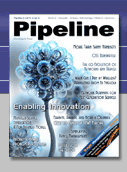
article page
| 1
| 2
| 3
| 4
| 5
|
-
Issues to consider relating to diagnostics:
- What is the work flow for the diagnostics scenario and who is involved (and what's the impact on OPEX)? For example:
- Completely autonomous (auto-run) diagnostics, no human-in-the-loop
- End-user initiates local diagnosis
- End-user initiates remote diagnosis through corresponding self-test portal
- End-user initiates remote diagnosis through call to service desk (should be minimized!)
- Network operator/service provider initiates remote diagnosis (end user not involved)
- Depending on the involved roles, what information is presented to which stake holder, and how is it ensured that the corresponding information flow is consistent? For example, what diagnostics information is relevant for:
- End-users
- Call center/service desk agents
- Network operation centers
- Service providers
- Device manufacturers
- How far can existing standards (e.g. those of the DSL Forum or OMA-DM) be used to cover the use cases described above - where are the gaps?
- Scalability issues: A full (proactive) monitoring solution that covers all aspects described here, implemented in a brute force manner, won't work for millions of devices. What happens in the case of service quality degradation due to a problem in the core network that is also detected on each device?
- A standard industry approach to identify different kinds of devices
- Implementation guidelines for the device management framework, to enable remote device management on the devices
|
|
Depending on the involved roles, what information is presented to which stake holder, and how is it ensured that the corresponding information flow is consistent? |
|

The TM Forum is well positioned to address these challenges. A critical mass of stakeholders is already engaged to address the end-end aspects across the entire value chain. The Forum's service provider and enterprise focus enable correct business requirements to be known and prioritized for managing devices. The Forum has a successful track record and infrastructure in place to manage collaboration programs. Faster delivery of solutions and better integration is possible due to expertise and resources in related business operations frameworks (for business processes, information, and applications) as well as product lifecycle management and service delivery.
The collaboration team is developing a guidebook on end-user device management and a companion industry groups positioning document.
Other industry groups that the TM Forum plans to work with are shown in Figure 1. The intent is not to re-invent, but rather to build upon and leverage related work wherever possible. This list is growing as the collaboration team expands to include new companies and work progresses.
|
|
|
|

|

article page
| 1
| 2
| 3
| 4
| 5
| |
|



